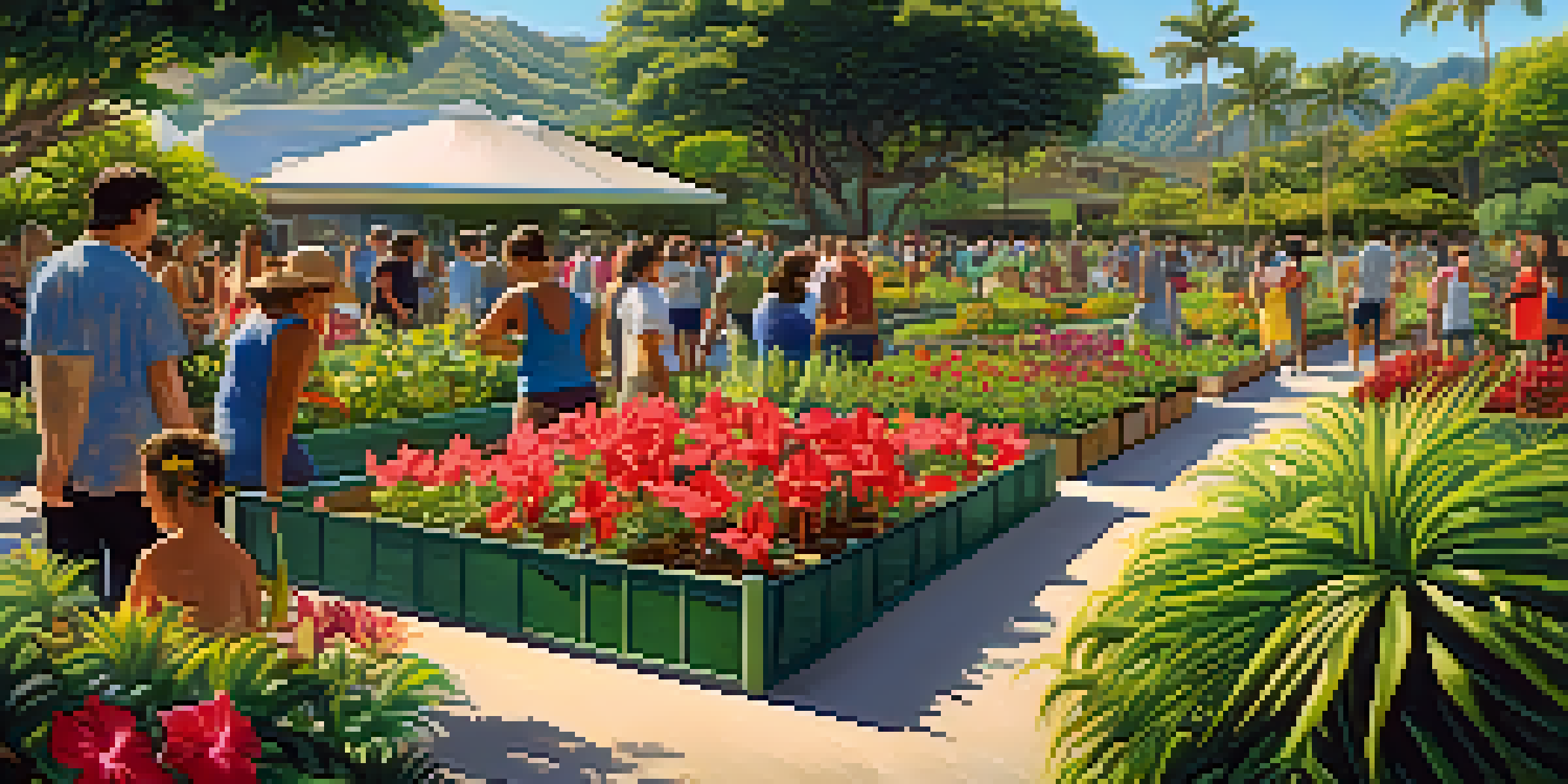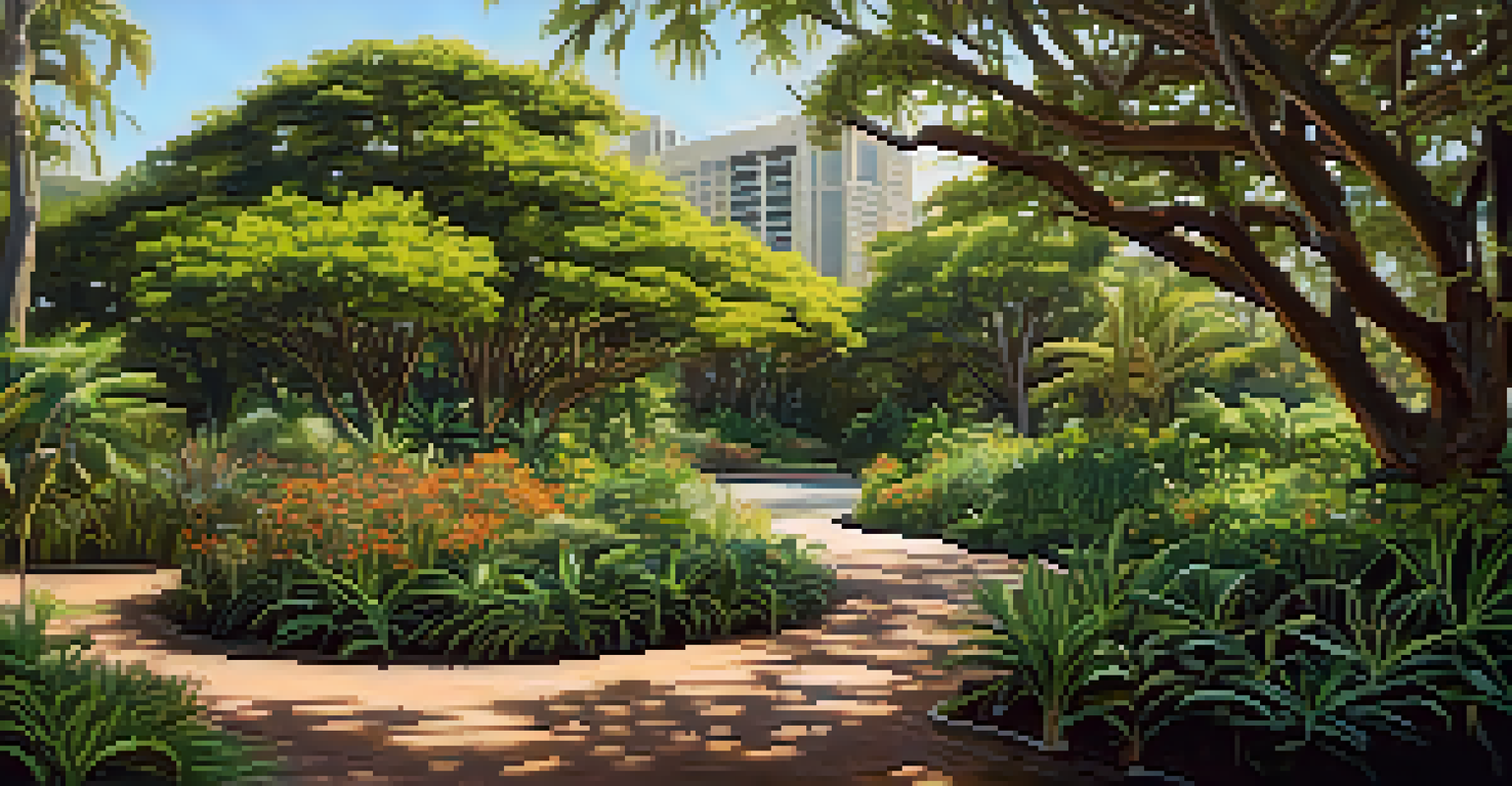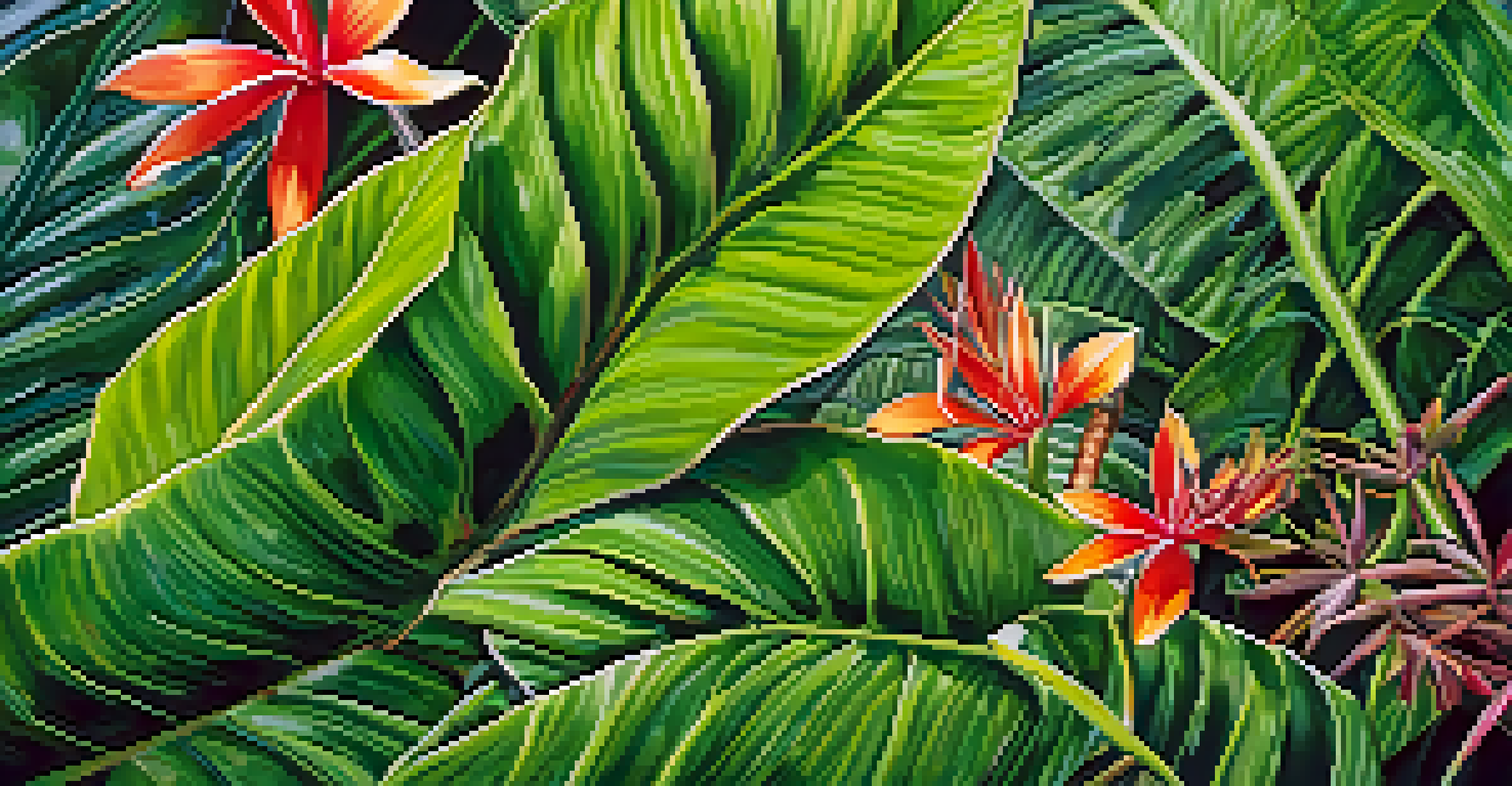The Role of Native Plants in Honolulu's Urban Environment

Understanding Native Plants and Their Importance
Native plants are those that naturally occur in a specific region without human intervention. In Honolulu, these plants have adapted to the local climate and soil, making them key players in the ecosystem. They provide habitat for native wildlife and contribute to the overall biodiversity of the area.
The creation of a thousand forests is in one acorn.
One of the main benefits of native plants is their resilience. Because they have evolved in their natural environment, they require less water and fewer chemicals than non-native species. This not only makes them easier to maintain but also supports sustainable gardening practices in urban settings.
Additionally, native plants play an essential role in preserving the cultural heritage of Hawaii. Many of these species are integral to local traditions and practices, connecting residents to their history and landscape. By incorporating these plants into urban design, we can foster a deeper appreciation for the unique environment of Honolulu.
Enhancing Biodiversity in Urban Honolulu
Biodiversity is the variety of life in a particular habitat, and it's crucial for a healthy ecosystem. In urban areas like Honolulu, the introduction of native plants can significantly enhance biodiversity by providing food and shelter for various species. This is especially important as urbanization often leads to habitat loss.

By planting native species in parks, gardens, and streetscapes, we can create corridors for wildlife, allowing them to thrive amid the concrete jungle. For instance, native birds, insects, and even some mammals rely on these plants for their survival. The more diverse our urban flora, the more resilient our ecosystems become.
Importance of Native Plants
Native plants are crucial for local ecosystems, providing habitat for wildlife and supporting biodiversity.
Moreover, increased biodiversity can improve the overall quality of life for residents. It can lead to healthier air, reduced noise pollution, and even mental health benefits, as green spaces provide a respite from urban stressors. Simply put, native plants are a natural antidote to the challenges of city living.
Combatting Invasive Species with Native Flora
Invasive species are non-native plants that can disrupt local ecosystems and outcompete native species for resources. In Honolulu, invasive plants have posed significant challenges, threatening the survival of indigenous plants and animals. By promoting the use of native plants, we can help mitigate the impact of these invaders.
Nature does not hurry, yet everything is accomplished.
Planting native species in urban landscapes creates a competitive advantage for them against invasive plants. For example, native groundcovers can outcompete invasive grasses, thus preserving the local flora. This not only helps maintain biodiversity but also supports healthier ecosystems.
Communities can play an active role in this combat against invasives by participating in local planting events and education campaigns. By understanding the importance of native plants, residents can make informed choices that benefit both their gardens and the broader environment.
Improving Soil Health with Native Plants
Soil health is critical for sustaining plant life and overall ecosystem health. Native plants have root systems that are specifically adapted to local soil conditions, which can help improve soil structure and fertility. Their deep roots prevent erosion and promote water retention, making them ideal for urban landscapes.
When native plants die back, they decompose and add organic matter to the soil, enriching it further. This natural process supports a vibrant microbial community essential for nutrient cycling. In contrast, non-native plants often require fertilizers to thrive, which can lead to soil degradation over time.
Enhancing Urban Resilience
Incorporating native plants into urban landscapes improves climate resilience by requiring less water and managing stormwater effectively.
By integrating native plants into urban gardens and landscapes, residents can contribute to healthier soils. This not only benefits the plants themselves but also enhances the overall health of the urban ecosystem, creating a more sustainable environment for everyone.
Native Plants and Urban Climate Resilience
Climate change presents significant challenges to urban areas, and native plants can play a crucial role in enhancing resilience. These plants are better suited to withstand local climate conditions, including droughts and heavy rainfall. By incorporating them into urban environments, we can better prepare for climate variability.
For instance, native plants require less irrigation, which is particularly important during periods of water scarcity. Their ability to absorb rainwater helps reduce runoff and the risk of flooding in urban settings. This natural stormwater management is a vital service that native flora provides.
Furthermore, by promoting shade and reducing heat absorption, native plants can help lower urban temperatures. This is especially beneficial in cities like Honolulu, where heat islands can exacerbate discomfort during hot months. Overall, native plants are not just beautiful additions but essential components of climate-resilient urban landscapes.
Cultural Significance of Native Plants in Hawaii
In Hawaii, native plants are not only vital for the environment but also hold immense cultural significance. Many native species are woven into the fabric of local traditions, ceremonies, and even cuisine. By fostering a connection with these plants, residents can celebrate their heritage and promote cultural continuity.
For example, the use of native plants like ti leaves in traditional Hawaiian practices symbolizes healing and protection. Incorporating these plants into urban spaces creates opportunities for educational programs that teach residents about their cultural importance. This enriches the community's understanding of its roots and identity.
Cultural Connection Through Flora
Native plants hold significant cultural value in Hawaii, fostering a sense of heritage and community among residents.
Moreover, by integrating native plants into public spaces, we can create environments that reflect the unique culture of Hawaii. This connection between people and plants fosters a sense of pride and stewardship, encouraging residents to care for and protect their natural heritage.
Promoting Community Engagement through Native Gardening
Engaging the community in native gardening initiatives can have profound effects on urban environments. Community gardens featuring native plants not only beautify neighborhoods but also serve as educational spaces. These gardens can be hubs for learning about local ecology, sustainability, and cultural practices.
By hosting workshops and planting events, residents can come together to share knowledge and experiences. This sense of community fosters a collective commitment to environmental stewardship, as people recognize the value of native plants in their surroundings. It transforms gardening into a shared journey rather than an isolated task.

Additionally, community engagement through native gardening can lead to improved mental health and well-being. Spending time in green spaces has been shown to reduce stress and increase feelings of happiness. When residents unite for a common cause, they not only enhance their environment but also strengthen community bonds.